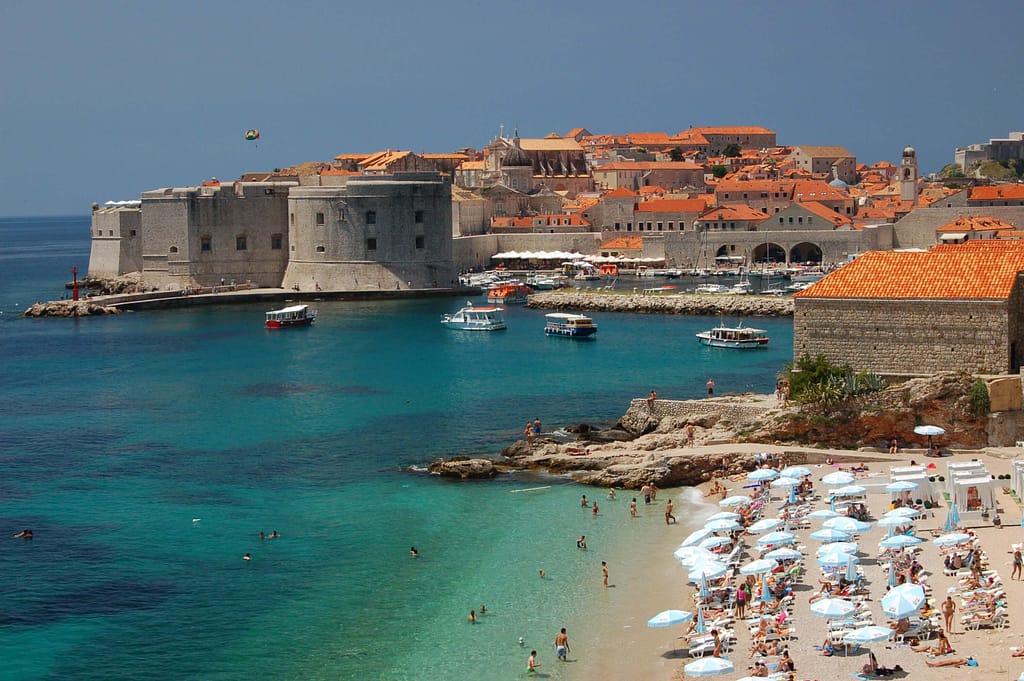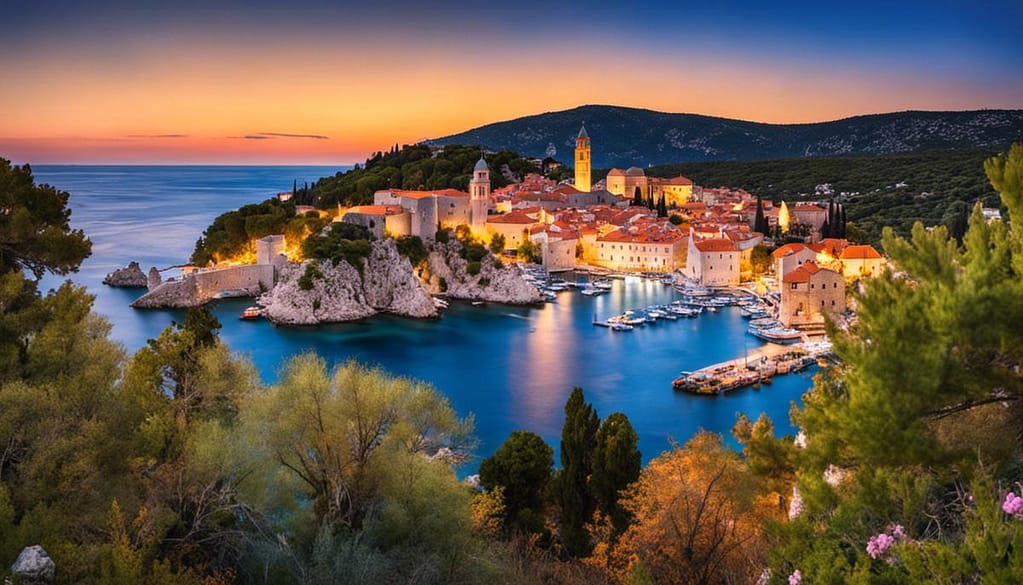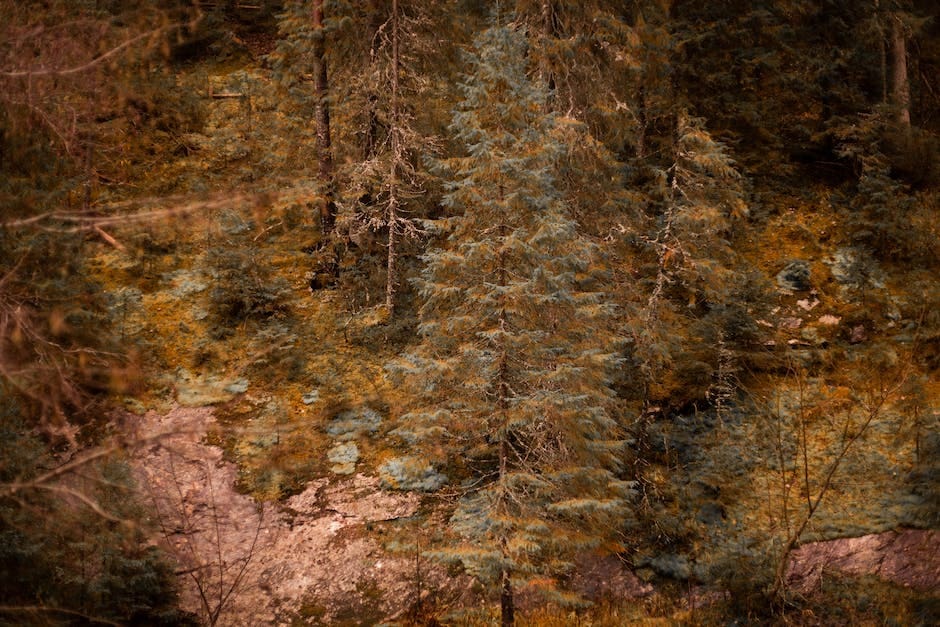Set on the edge of the Adriatic Sea, Croatia is a country distinguished by its rich historic legacy, breath-taking natural landscapes, and a vibrant cultural scene. Comprising small medieval towns to cosmopolitan cities; serene islands to dramatic mountainous regions; there lies an enticing blend of experiences waiting to be discovered. Whether you’re drawn in by a desire to delve into its colourful past, a longing to immerse in its unique customs and folklore, a curiosity to savour regional gastronomic delights, or simply to navigate the fascinating tapestry of its locales – Croatia promises to awaken your senses like no other. This Croatia travel guide endeavours to provide you with a comprehensive view of what awaits in this mesmerising Balkan country.
Croatia Travel Guide: History, Culture and Language
Unravelling Croatia’s History
Croatia has a richly textured history, a tapestry interwoven with the threads of many cultures and empires that have swept across the region, each leaving an indelible print. The Prehistoric era saw the arrival of the Illyrians, followed by the Greeks and Romans. The Roman influence is visible in the splendid arenas of Pula and the remarkable Diocletian’s Palace in Split.
The Croats arrived in what we now call Croatia in the 7th century. They adopted Christianity in the 9th century, propelling the country into the sphere of influence of Rome and the rest of Europe.
Croatia’s journey to nationhood has been turbulent, marked by a colourful interplay of kingdoms, empires, world wars, and the struggle for independence, the most recent being the Homeland War (1991-1995) against Yugoslavia.
Embracing Croatian Culture
Croatian culture reflects its historical influences beautifully, a versatile mosaic of Mediterranean, Central European and Balkan traditions. The UNESCO-protected intangible cultural heritage list features several Croatian entries, including the two-part harmonies from Istria, the traditional wooden toy craft from Hrvatsko Zagorje, and the potent Sinjska Alka knight’s tournament in Sinj.
Crumbling Venetian-era coastal towns tranquilly rub shoulders with vibrant cities like Zagreb, pulsating with a dynamic, modern culture. The coastal region, particularly Dalmatia, is famous for its ‘Fjaka’ or art of doing nothing, celebrating the joy of living in the moment.
Croatia’s Irresistible Gastronomy teems with mouth-watering delights, reflecting regional variations. Whilst Istria and Dalmatia revel in Mediterranean flavours with an abundance of seafood, truffles, and wine, Slavonia shines with meaty stews, spicy sausages, and hearty strudels.
Creative expressions drip from every corner of Croatia. From contemporary art showcased in impressive galleries to street art, and from traditional klapa music echoing off alleyways to slick jazzy beats in plush clubs.
Festivals, modern and traditional, are integral to Croatian culture, asserting its passion and verve. These include the Pula Film Festival, the Split Summer Festival, and the Sinjska Alka.
An Introduction to the Croatian Language
Croatian is the country’s official language and belongs to the South Slavic family, bearing close semblance to languages like Serbian, Bosnian, and Montenegrin. It’s primarily written using the Latin alphabet. Although English is commonly used, especially among young locals and in areas heavy with tourism, finding your way around a few Croatian phrases can greatly enrich your travelling experience.
Helpful phrases may include:
- ‘Dobar dan’ (Good day)
- ‘Hvala’ (Thank you),
- ‘Molim’ (Please),
- ‘Gdje je WC?’ (Where is the toilet?)
- ‘Govorite li engleski?’ (Do you speak English?).
- Interestingly, there’s a distinct word often used in Dalmatia – ‘Pomalo’. It literally translates to ‘little by little’, hinting at a laid-back pace – a reflection of life in Croatia.
Comprehending the Croatian language, its history, and cultural ethos offers more than just a touristic visit. It paves the way for a deep dive into the very spirit of Croatia, turning your journey into a collection of indelible impressions even long after you’ve bid farewell to its sunlit coastlines.

Places to Visit in Croatia
The Splendour of Dubrovnik
Set on the Dalmatian Coast, Dubrovnik is commonly referred to as one of Croatia’s most picturesque cities. Sometimes known as the “Pearl of the Adriatic”, this city captivates with its remarkable ancient city walls and quaint cobbled lanes that narrate tales from history. As a UNESCO World Heritage Site, Dubrovnik boasts stunning vantages from its defensive walls, awe-inspiring structures like the Rector’s Palace and the Dubrovnik Cathedral, and the utterly delightful experience of meandering through the pedestrian-only Old Town.
Magical Split
Split, the second largest city in Croatia, is remarkable in its historic abundance. Diocletian’s Palace, also a UNESCO site, constitutes the city’s historic core. The ancient palace is home to Split’s main square, the Peristyle, and the remarkably well-preserved Temple of Jupiter. Split also offers a vibrant nightlife and gastronomical scene—allowing travellers to explore local Croatian wine and seafood offerings.
Park of Waterfalls: Plitvice Lakes
For natural wonder seekers, Plitvice Lakes National Park is a must-visit. A UNESCO World Heritage site, the park is a sight to behold with its waterfalls cascading through the lush greenery into 16 turquoise lakes. A network of wooden walkways allows visitors to appreciate the unspoiled beauty from various perspectives.
Intriguing Zadar
Zadar charms tourists with its unique blend of ancient and contemporary attractions. Home to Roman ruins and medieval churches, the city also boasts modern installations like the Sea Organ, an art object creating harmonic sounds through the movement of the sea, and the Greeting to the Sun, a solar-powered light show.
Quiet Korčula
As part of Croatia’s stunning Dalmatian islands, Korčula offers picturesque views, an idyllic atmosphere, and vineyards producing excellent local wines. Known for being the supposed birthplace of famous explorer Marco Polo, Korčula retains its historical feel with fortified walls and Gothic-Renaissance architecture, including the majestic St Mark’s Cathedral.
Mysterious Istria
The Istria peninsula, often compared to Tuscany with its rolling hills and vineyards, is home to medieval hilltop towns like Motovun and Grožnjan. Besides its natural beauty, Istria is famous for its cultural heritage, with Pula displaying one of the world’s best-preserved Roman amphitheatres, and the Basilica of Euphrasius in Poreč, another UNESCO Site.
Blissful Elaphiti Islands
The Elaphiti Islands, a small archipelago near Dubrovnik, offer opportunities for island-hopping, exploring hidden caves, quiet beaches, and car-free islands. Known for their citrus groves, olive trees, and vineyards, it’s an idyllic retreat away from the busy mainland.
Engaging with the Locals
Engaging with the local populace is a quintessential aspect of fully embracing the Croatian experience. Their welcoming nature, profound appreciation for their customary music and dance, along with the regional gastronomy, augment the allure of this enchanting destination. Each region of Croatia carries its unique allure and narrative, rendering it a haven for historians, nature enthusiasts, and culinary explorers alike.

Croatia Travel Guide: Accommodations, Transportation, and Safety in Croatia
Choosing Where to Stay in Croatia
Croatia presents a range of accommodation options to suit a variety of preferences and budgets. Luxury hotels, conveniently located in vibrant city centres or near beautiful coastlines, provide all-inclusive services for those desiring a plush stay. Conversely, more cost-conscience explorers can find refuge in the wealth of hostels peppered throughout the nation.
For those wanting a balance between comfort and cost, Bed & Breakfasts are a popular choice. These venues offer a more intimate experience, complete with home-cooked meals and heartfelt local hospitality.
Here is a list of TOP Rated Bed & Breakfast in Croatia:
- Villa Waterfalls Plitvice – Superb 9.1 Ratings
- B&B Green Serenity Plitvice Lakes – Superb 9.3 Ratings
- Pansion Vila Vanda – Superb 9.4 Ratings
- Boutique B&B Agroturizam Sv. Juraj – Superb 9.1 Ratings
- Villa Nora Hvar – – Exceptional 9.7 Ratings
Villas, particularly prominent along the coastal regions, provide private and spacious accommodation, ideal for friends or families on an extended holiday. Many of these residences boast breath-taking views of the Adriatic Sea and its surrounding islands.
Here is a list of Cheapest and TOP Rated Beach Front Villas in Croatia:
- jm-Sutomišćica-holiday House on the beach – Superb 9.3 Ratings
- House Ema – Exceptional 9.5 Ratings
- House Paula Rab (4-7 guests) – Exceptional 9.7 Ratings
- My Mediterranean Villa with Huge Garden and own Parking – Exceptional 9.8 Ratings
- Aminess Gaia Green Villas – Superb 9.1 Ratings
Here is a list of Cheapest and TOP Rated Beach Front Camping Accommodation in Croatia:
- Olivia Green Camping – Fabulous 8.6 Ratings
- Camp Maslina – Superb 9.3 Ratings
- Salve Croatia Mobile Homes in Amadria Park Trogir – Very Good 8.4 Ratings
- Mobile Homes at Camping Ugljan Resort – Superb 9.2 Ratings
- Mobile Homes AZZURRO – Fabulous 8.9 Ratings
For a closer communion with nature, Croatia provides numerous campgrounds particularly along the Istrian peninsula and Dalmatian coast. These affordable locations offer a truly immersive experience in the country’s natural beauty. Noteworthy is that Croatian campgrounds are well-appointed, often featuring amenities such as electricity, restrooms, shops, and even dining establishments.
Transportation in Croatia
Croatia has a well-connected transportation network, making it relatively easy to navigate through. Buses are the most common form of public transportation, offering frequent services both within and between cities. They are quite comfortable and reasonably priced.
Trains are less popular due to their limited network, but are still commonly used for inner-city travel, and they offer a scenic journey at a slower pace.
Ferries and catamarans provide a convenient and enjoyable way to explore the numerous islands dotting the Croatian coastline. These services are extremely punctual and are mostly used in the summer months.
Renting cars is another viable option, especially for those seeking flexibility and freedom. Croatia’s roads are of good quality and well-marked, although caution should be exercised in rural areas where roads can be winding and narrow.
Safety in Croatia
Croatia is considered a safe country for travellers, but standard safety measures should be maintained. Common sense precautions such as keeping personal belongings secure, avoiding poorly-lit areas at night, and not travelling alone in secluded regions, particularly for women, are recommended.
Healthcare facilities in Croatia are generally of a high standard in urban areas. Pharmacies are well-stocked and medical personnel are adequately qualified. However, certain specific vaccinations (Hepatitis A and B, Rabies) are recommended before travel.
As in any foreign country, familiarising oneself with local laws and customs is essential. It’s worth noting that smoking is banned in public places in Croatia, and photo-taking can be restricted or require permits in certain historic sites. Dancing or loud music at night is sometimes considered inappropriate in certain regions, and swimwear is strictly confined to beaches.

RELATED BLOG:
Croatian Cuisine: Distinct Flavours and Dishes You Must Try
The Diverse Heritage of Croatian Gastronomy
Croatian gastronomy is celebrated for its historical richness and features a multitude of flavours that vary across different regions. The gastronomic range of the country is a melding of its geographic setting and historical associations with diverse cultures such as Italian, Hungarian, Turkish, and Austrian, among others, leading to a culinary portfolio as diverse as it is delicious.
Distinctive Regional Cuisines
In the continental region, the cuisine takes a hearty, homely form with influences from neighbouring Hungary. Think thick soups, game, freshwater fish, and an abundance of sausages. The speciality, Zagorski Štrukli, is a unique pastry with cottage cheese, often served as an appetiser.
Contrarily, the coastal region, including Dalmatia and Istria, is heavily influenced by Greek, Roman, and Mediterranean cuisines. Here, the usage of olive oil, herbs, and spices could be witnessed. Mouth-watering seafood, fresh produce, and varied types of pasta and risottos are staples.
Iconic Dishes
One cannot simply leave Croatia without sampling their national dish – Peka. This delicious stew of vegetables and meat (often veal, but also lamb, chicken or octopus) is cooked under a bell-like dome, or ispod čripnje. Other must-tries include Crni Rizot, a black risotto coloured by squid ink and Pasticada, a slow-cooked beef dish served with gnocchi.
Refreshments and Street Food
Rakija, a potent fruit brandy, is the national drink and found in multiple flavours such as pear, cherry, and plum. Karlovacko and Ozujsko, two popular beers, are also worth a try. As for street food, a variety of pastries and sandwiches filled with cream cheese and cured meat (Burek and Gibanica) are popular choices.
Dining Establishments
From local markets to high-end restaurants, the nation offers dining experiences to fit a spectrum of budgets and preferences. For local produce and ingredients, the Dolac Market in Zagreb is a top spot. For Michelin Star dining, Noel in Zagreb and Pelegrini in Sibenik offer first-class experiences. Numerous Konobas (traditional taverns) dotted across the country provide hearty, home-cooked meals in a rustic setting.
Wine Production
Croatia is a hidden gem when talking about world-class wine. With the country’s varied climates, both Mediterranean and continental wines are generated. The fertile soil of Istria and Dalmatia, the coastal regions, give rise to some of the finest wines, including Malvazija Istarska (white) and Teran (red).
Embarking on a culinary journey in Croatia provides the opportunity to delve into age-old traditions, discover unique culinary practices, and understand the historical influences that have shaped the nation. Appreciating Croatian cuisine is not only about savouring the flavours but also about gaining a deeper understanding of the country’s rich heritage.

Wrapping it up
Embarking on a journey to Croatia can become a deeply rewarding adventure. With a plethora of accommodation choices, various means of transportation, and excellent safety levels, travellers can thoroughly enjoy their experience. Of course, this is assuming that visitors stay informed and adhere to the local customs and rules.
Seasonal Guide to Croatia: Best Time to Visit
Deciding on the Perfect Season
Croatia’s climate varies dramatically with the seasons, creating distinct experiences for tourists. The inland region undergoes hot summers and chilly winters due to its continental climate. In contrast, the coastal areas boast a Mediterranean climate, offering mild winters and dry summers. By familiarising oneself with these seasonal changes and matching them with their preferences, travellers can truly maximise their time in Croatia.
Peak Summer Season
The summer months, from June to August, are the warmest and the most popular among visitors. This period is perfect for beach holidays on the Adriatic coast and island hopping across the scenic Croatian islands. Particularly renowned are Hvar, Brac, and Korcula, each promising mesmerising turquoise waters and captivating sunsets. The vibrant city of Dubrovnik, known for its robust history and striking architecture, is a real magnet in this season.
This period also witnesses multiple music festivals, including Ultra Europe and Hideout Festival, drawing in scores of music enthusiasts. Do note, it’s the peak tourist season, which may lead to crowded destinations and soaring accommodation prices.
Spring and Autumn Delights
For those seeking less crowd and moderate weather, the shoulder seasons of spring (April to June) and autumn (September to October) are excellent. These months proffer comfortable temperatures, ideal for outdoor activities like hiking and sightseeing. In autumn, tourists can relish the wine harvest season and explore the mainland’s fertile vineyards.
Spring, on the other hand, brings along Easter celebrations and vibrant flower blossoms. The middle of May witnesses the Museum Night, where museums across the country open their doors for free, making it a cultural treat.
Embrace the Winter Chill
Croatia transforms into a winter wonderland from November to March with its snowy landscapes and festive atmosphere. Although swimming is off the table, it’s an opportune time for winter sports in hilly regions such as Sljeme. The advent season sees cities adorned with Christmas markets, most notably in Zagreb, voted as Europe’s best Christmas market thrice. Despite the chill, the hospitality of the locals remains as warm as ever.
Festival Calendar
Finally, for the culturally inclined, planning the trip around the country’s festivals might be satisfying. Croatia celebrates diverse festivals all year round. Summer Festival (July-August) in Dubrovnik, Dance Week Festival (June) in Zagreb, Pula Film Festival (July) in Istria are amongst the prominent ones. Carnival festivities in February also promise an enriching experience.
In conclusion, the best time to visit Croatia largely depends on the visitor’s interests and preferences. Whether it’s basking under the sun on an idyllic beach, exploring historic sites in pleasurable weather, or partaking in lively festivals, Croatia guarantees an unforgettable experience at any time of the year.

The infectious spirit of Croatia is encapsulated in its diverse historical destinations, the unparalleled beauty of its surroundings, and the prowess of its culinary scene. The country truly offers an intoxicating blend of old-world charm, contemporary sophistication, unspoiled wilderness, and gastronomic pleasure. Whether you’re a history buff, an adventure enthusiast, a foodie or a wanderer at heart – there is an experience that awaits you around every corner of Croatia. By understanding its history, culture, and language, identifying places of interest, becoming acquainted with its cuisine, addressing travel practicalities, and choosing the right season to visit, you’ll be well-equipped to make the most of your Croatian adventure.

